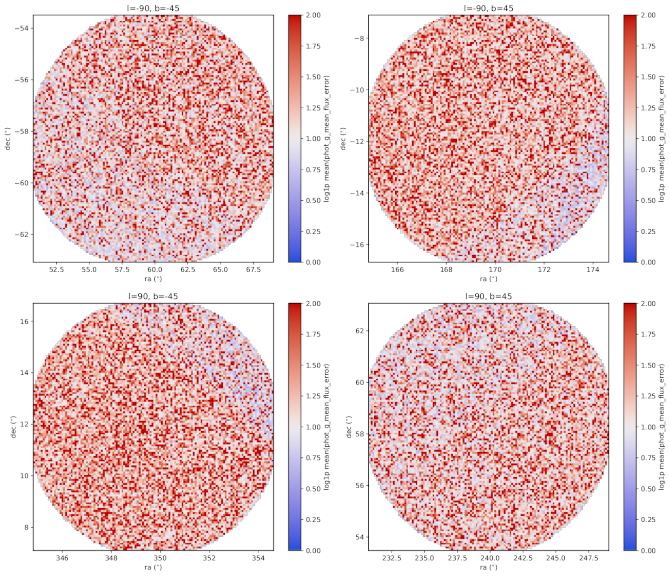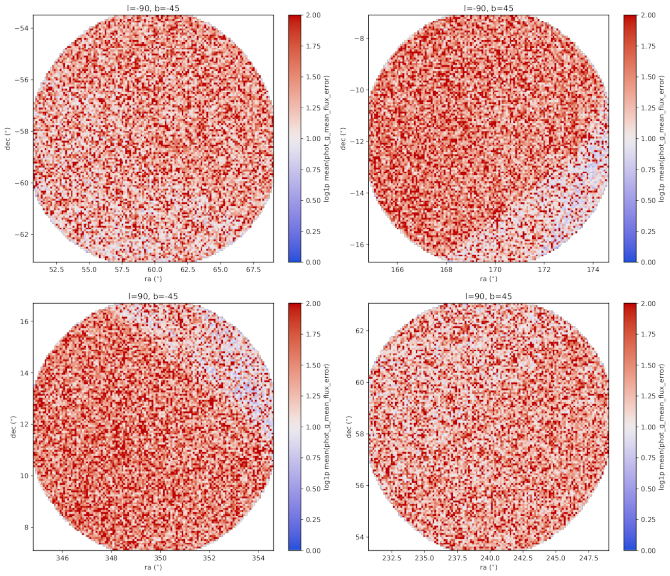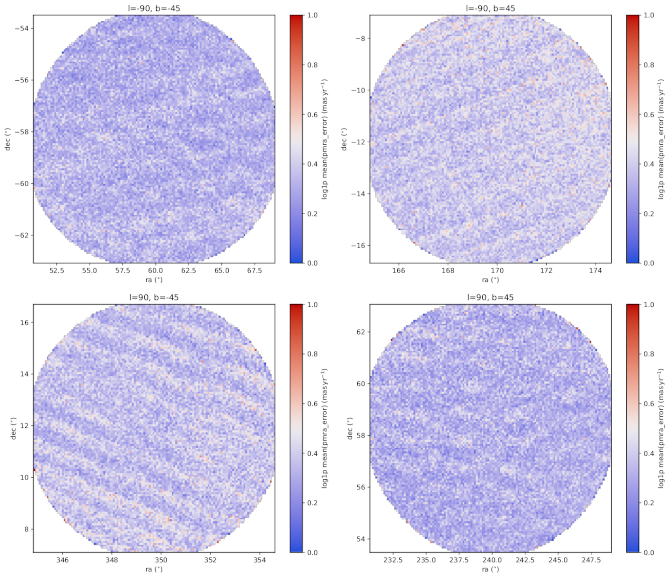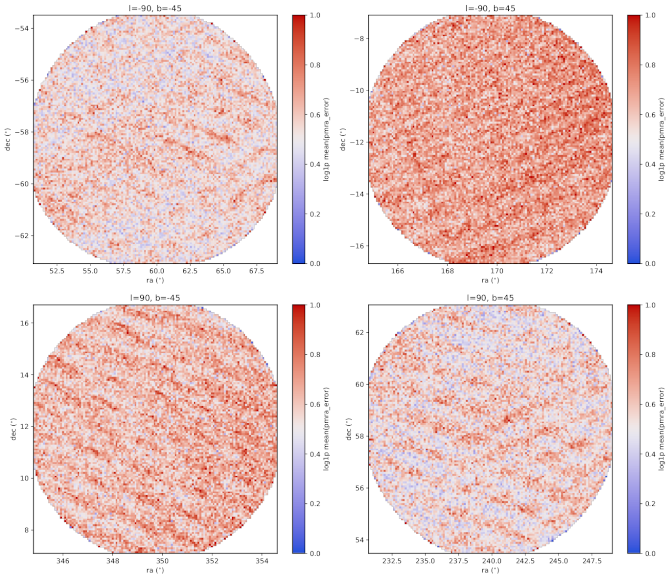8.5.5 Three-dimensional KLD: Gaia EDR3 vs Gaia DR2
The tests performed here are to assess if the astrometric and photometric data exhibits similar statistical properties, such as clustering and correlation between different observables on several small regions on the sky. The idea here is to test where any observables or a combination of observables exhibits unexpected properties on small scales. The tests are executed for all parameters in common between Gaia EDR3 and Gaia DR2 as well as for a few selected parameter subsets.
We compute the 3D KLD using subspaces that contain combinations of ra, dec, and any other parameter. The goal is to assess how much position-dependent substructure (i.e. clustering) is present in the data. When computing the KLD statistic we use limits that contain 99% of the data in each subspace, i.e. we do not consider the top and bottom 0.5 % of the data points in each subspace to avoid outliers.
In Figure 8.26 we observe the 3D KLD values for ‘patch-b’ and ‘patch-c’ to be in good agreement. Since these patches are symmetric w.r.t. the Galactic centre and plane, this is the expected behaviour. A similar behaviour is observed for the other patch pair.
Overall, we observe that parameters related to astrometric precision (e.g. pmra_error), tend to be more clustered (higher KLD value) in Gaia DR2 than in Gaia EDR3. Even though we do not consider the top and bottom 0.5% of the data while computing the KLD, some outliers may still remain, resulting abnormally small KLD values. We find that the subspaces containing astrometric_excess_noise_sig and phot_g_mean_flux_error suffer from this effect.
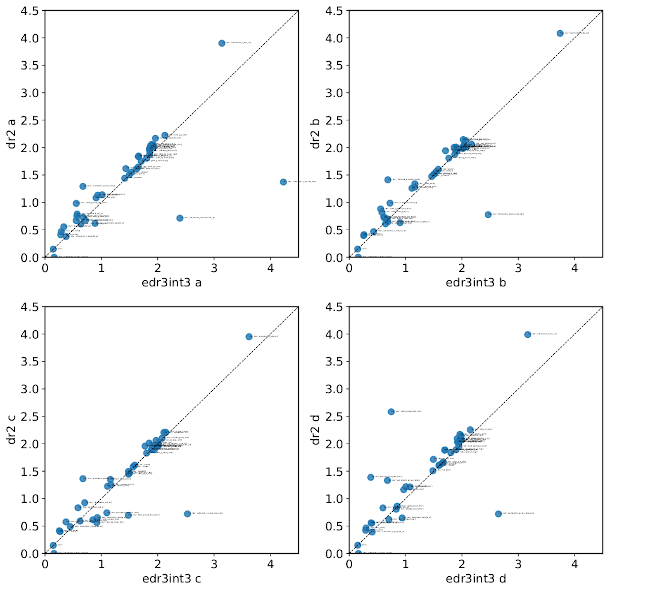
To exemplify the differences observed in the KLD values, we compared the on-sky distribution of two average quantities that appear to be less clustered (lower KLD value) in Gaia EDR3 than in Gaia DR2. In Figure 8.27 we show the on-sky distribution of the average phot_g_mean_flux_error. We notice that this photometric quality quantity has improved in the sense of being more uniform as well as having a lower average value, when compared to Gaia DR2. We attribute this to the higher number of visits. In Figure 8.28 we show the same but the averaged quantity here is pmra_error. This quantity shows the characteristic scanning-law pattern systematics, which is evident on smaller scales than the previous figure. We attribute this to the sensitivity of astrometric parameters to the orientation of the visits, and not only their amount.
